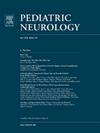儿童神经科医生对女性癫痫患者的叶酸处方和生殖咨询实践
IF 3.2
3区 医学
Q2 CLINICAL NEUROLOGY
引用次数: 0
摘要
背景癫痫妇女(WWE)经历与生殖健康相关的耻辱。儿科神经科医生通常不愿意提供与年龄相适应的生殖健康咨询(RHC)和叶酸处方(FA)。我们研究了儿童神经科医生的RHC和FA处方实践,并提供了FA剂量最大化WWE及其孩子的文献综述。方法:我们对2022年1月至6月在我们中心连续227例WWE的儿童神经科医生开具的RHC和FA处方进行了回顾性横断面研究。我们研究了患者的年龄、抗癫痫药物(asm)的致畸风险、asm的数量、是否存在智力残疾(ID)和医师委员会认证。利用北美抗癫痫药物妊娠登记(NAADPR)数据库确定ASM致畸风险,高风险≥2.5%为主要畸形阈值,低风险≥2.5%为主要畸形阈值,未知风险无NAADPR数据。结果儿科神经科医师不一致地开具FA(11%)和记录RHC(10%)。丙戊酸组的WWE接受FA的频率更高(31% vs 9.6%, P = 0.004, χ2 = 8.28),但与其他ASMs组的RHC相似(P = 0.080, χ2 = 3.06)。癫痫病医生开FA的次数并不比普通神经科医生多(P = 0.65, χ2 = 0.19),而普通神经科医生更常记录RHC (18% vs 4%, P = 0.00047, χ2 = 4.21)。16-18岁WWE接受RHC的比例高于12-15岁WWE (12.7% vs 10.5%, P = 0.025, χ2 = 4.96), FA处方差异无统计学意义(P = 0.60, χ2 = 0.27)。ID患者接受FA的频率较低(6% vs 15%, P = 0.035, χ2 = 4.44),而RHC无差异(P = 0.29, χ2 = 1.09)。结论:我们量化了WWE护理方面的重大差距,以促进质量改进举措。以目前的知识,每日1毫克口服FA似乎适合WWE。本文章由计算机程序翻译,如有差异,请以英文原文为准。
Folic Acid Prescribing and Reproductive Counseling Practices of Child Neurologists for Women With Epilepsy
Background
Women with epilepsy (WWE) experience stigma related to reproductive health. Pediatric neurologists are often uncomfortable providing age-appropriate reproductive health counseling (RHC) and prescribing folic acid (FA). We studied RHC and FA prescribing practices for child neurologists and provide a literature review for FA dosing maximizing benefit for WWE and their children.
Methods
We performed a retrospective cross-sectional study of RHC and FA prescribing by child neurologists at our center for 227 consecutive WWE from January to June 2022. We studied patient age, teratogenic risk of antiseizure medications (ASMs), number of ASMs, presence/absence of intellectual disability (ID), and physician board certification. ASM teratogenic risk was determined utilizing the North American Antiepileptic Drug Pregnancy Registry (NAADPR) database with ≥2.5% threshold of major malformation for high risk, <2.5% for low risk, and no NAADPR data for unknown risk.
Results
Pediatric neurologists inconsistently prescribe FA (11%) and document RHC (10%). WWE on valproic acid receive FA more often (31% vs 9.6%, P = 0.004, χ2 = 8.28) but similar RHC to WWE on other ASMs (P = 0.080, χ2 = 3.06). Epileptologists do not prescribe FA more than general neurologists (P = 0.65, χ2 = 0.19), and general neurologists document RHC more often (18% vs 4%, P = 0.00047, χ2 = 4.21). WWE aged 16-18 years receive RHC more than WWE aged 12-15 years (12.7% vs 10.5%, P = 0.025, χ2 = 4.96) with no difference in FA prescriptions (P = 0.60, χ2 = 0.27). Patients with ID receive FA less often (6% vs 15%, P = 0.035, χ2 = 4.44) with no difference in RHC (P = 0.29, χ2 = 1.09).
Conclusions
We quantify a significant gap in care for WWE to facilitate quality improvement initiatives. Preconceptional FA 1 mg orally daily seems appropriate for WWE with present knowledge.
求助全文
通过发布文献求助,成功后即可免费获取论文全文。
去求助
来源期刊

Pediatric neurology
医学-临床神经学
CiteScore
4.80
自引率
2.60%
发文量
176
审稿时长
78 days
期刊介绍:
Pediatric Neurology publishes timely peer-reviewed clinical and research articles covering all aspects of the developing nervous system.
Pediatric Neurology features up-to-the-minute publication of the latest advances in the diagnosis, management, and treatment of pediatric neurologic disorders. The journal''s editor, E. Steve Roach, in conjunction with the team of Associate Editors, heads an internationally recognized editorial board, ensuring the most authoritative and extensive coverage of the field. Among the topics covered are: epilepsy, mitochondrial diseases, congenital malformations, chromosomopathies, peripheral neuropathies, perinatal and childhood stroke, cerebral palsy, as well as other diseases affecting the developing nervous system.
 求助内容:
求助内容: 应助结果提醒方式:
应助结果提醒方式:


